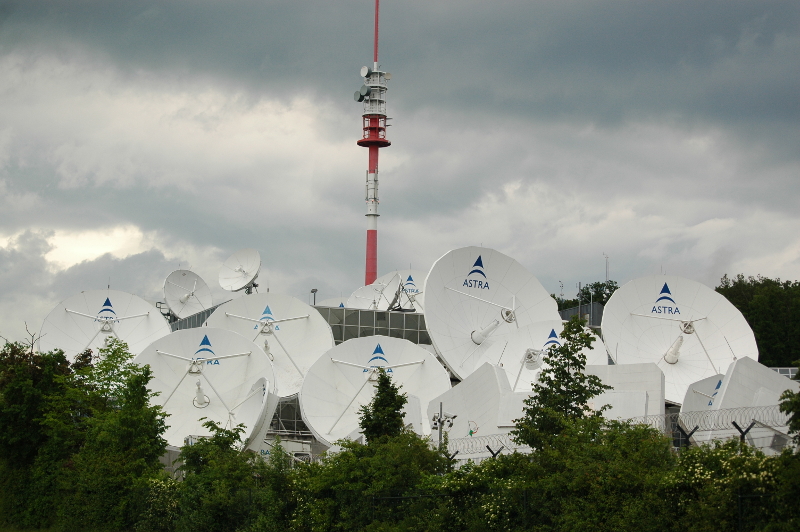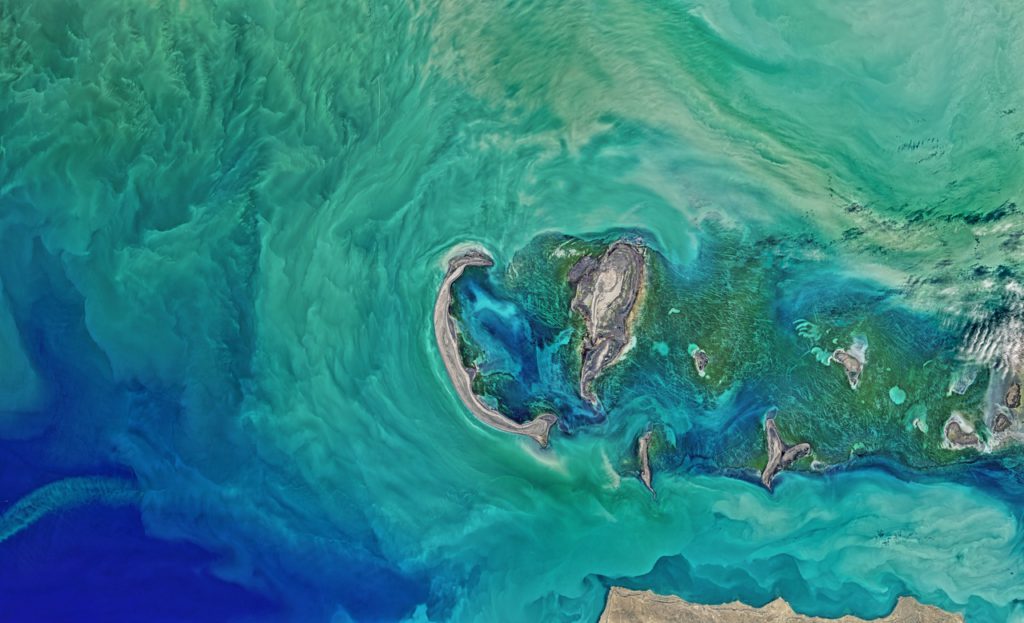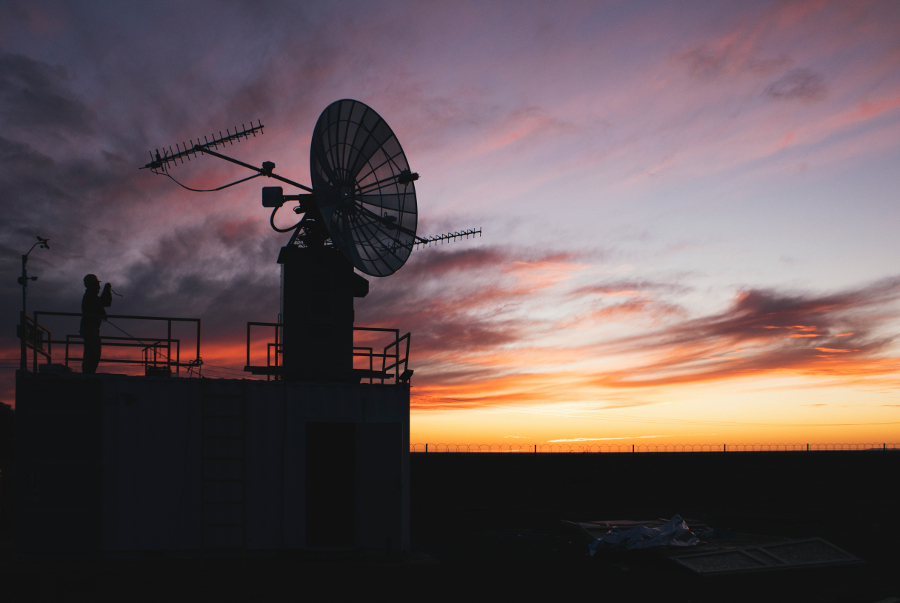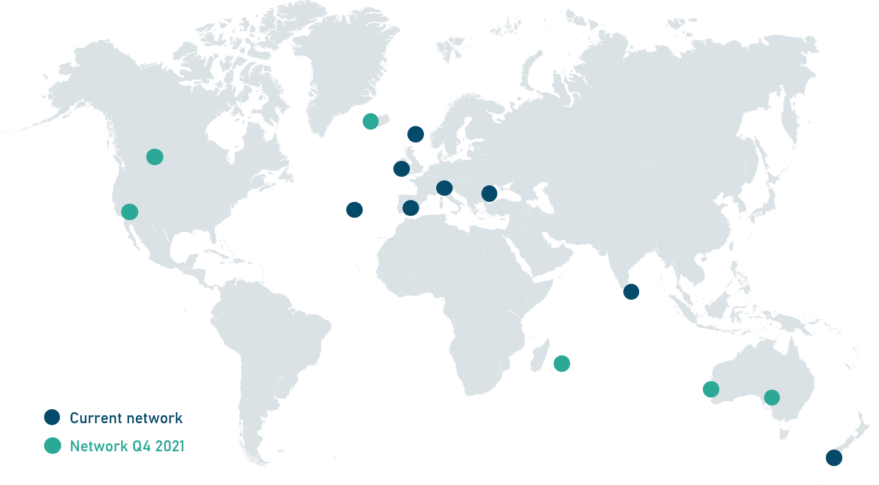FEBRUARY 2021 – This position piece is produced in collaboration with commerical partner satsearch. Article originally published at satsearch.co – link.
The selection of an optimal ground station site is critical for a successful space mission or service. This article discusses some of the factors that need to be balanced in this decision, and was developed in collaboration with Leaf Space, a participant in the satsearch membership program.
Without stable, consistent, and cost-effective access to in-space assets for data exchange and control, a satellite operator cannot develop a reliable service.
The geographic location of the ground segment (whether of an individual station or a network of antennas in different parts of the world) is a critical aspect of its performance.
In this article we take a look at what factors make a good site for a ground station, based on the knowledge and experience of Tommaso Randolfi, Sites Manager at satsearch member company and ground station network operator Leaf Space.
Cover image: antennas at the Gilmore Creek ground station located at the National Oceanic and Atmospheric Administration (NOAA) facility near Fairbanks, Alaska. Credit: NASA/Goddard/Clare Skelly (“Near Earth Network Ground Antenna” by NASA Goddard Space Flight Center is licensed under CC BY 2.0).
Basic ground station site requirements
For very simple operational requirements a ground segment could function effectively with just enough space to install, operate and maintain a 3-5 meter antenna. The entire site could be as small as 15-30 square meters and it could be situated on a rooftop, provided there isn’t too much interference, which can occur in any location or facility for a variety of reasons.
In contrast, existing teleport sites are very large and grow in stages driven by market needs. Many older sites were not developed with Low Earth Orbit (LEO) applications in mind. LEO coverage requires good horizon availability so that data transfer can be maximized and it is possible to track satellites effectively.
Many previously built sites have never needed this capability and are situated in hilly or mountainous regions that limit their ability to scan the horizon, and so offer satisfactory coverage for LEO satellites.

There are several sites currently in development that are primarily for LEO customers, specifically in Europe, the USA, Canada, New Zealand, and a few other locations. Interest from local teleport operators with suitable sites is also increasing as the market develops.
Whether for LEO or other applications, any good ground station site requires certain key features in order to provide an effective datalink to space.
- Power supply – this must be robust, reliable and cost-effective. This is rarely a significant barrier to a new location in most parts of the world however.
- Internet connection – a stable internet connection is vitally important, and this is not always straightforward to achieve for sites based in remote areas.
- Safety – security in terms of weather or climate disruption, natural disasters, and civil unrest are key considerations in some parts of the world.
- Access – the station must be possible to access (both remotely and in-person) when required.
- Pollution and interference – a lack of radio noise pollution is highly desirable and the lack of harmful interference is mandatory.
- Local expertise – access to local expertise is very desirable, from both a service quality and regulatory compliance standpoint.
- Ability to be flexible – in order to adapt to changing end user requirements, technology capabilities, and other factors that could affect future operations.
- Longevity – the site must remain effective at least for the mission timelines, but ideally for much further into the future where the aim is to develop a professional service.
- RF allocation and compatibility – the site should be located in a country or region where frequency allocations reflect the end users’ operational parameters.
Some of these factors are straightforward to assess, but for others there is more subjectivity and detail involved that can affect the decision of a ground segment location. These are discussed in more detail below.
The importance of local knowledge
Trusted contacts in key target locations are very important for the success of any ground station operation.
We have previously discussed with Leaf Space the processes involved in acquiring a license for ground station operations, a set of activities in which local contacts and knowledge were clearly highlighted.
A ground station license is required in every country that the mission will operate in, and these may need to be acquired in a relatively short period of time.

Regulatory requirements differ from country to country – some closely match the International Telecommunications Union (ITU) frameworks while others have slightly different policies. Those with local expertise can help understand the idiosyncrasies.
Leaf Space has found that this is a crucial area for the NewSpace market, where innovative technologies and new market entrants are attempting to develop missions and service concepts that don’t always follow traditional processes.
In some segments of the NewSpace market there is a lack of well-defined standards that can simplify the licensing process. Such areas include;
- The number of satellites necessary for an effective constellation,
- The frequencies that must be used for a specific service, and
- The evolution of satellite technologies.
For example, satellites that have traditionally used the X-band or S-band frequencies may change to higher power frequencies as new solutions become available.
The ground segment needs to keep pace with such upgrades and be versatile enough to meet varying requirements for existing technologies.
With these needs in mind, when it comes to the optimal selection of a ground station site it is local contacts that could help ensure a location can be developed that is fit for purpose.
In addition to local professionals who can help simplify regulatory and licensing compliance, access to experienced teleport operators and maintenance personnel is also very important for successful operations.
Ongoing site management and monitoring
An experienced teleport operator will understand how the ground segment as a service model works and has the capability to get a site up and running quickly and cost-effectively.
This is most easily done by deploying or re-deploying antennas at existing facilities, though compatibility and upgrade paths are a challenge.
It is important that a trusted solution is also in place for monitoring the sites in a network while in use.
Effective hardware and software monitoring brings benefits to both the local teleport operator and ground station manager – reducing the maintenance burden on both parties and reducing service disruption.
The development of interconnected and automated systems that can communicate with scheduling systems is enabling teleport operators and ground station network managers to offer a very efficient and high level of service to their clients.

In addition, trusted partnerships with experienced operators give ground station managers and end users the right level of support in the event of a problem.
Such partnerships take time to develop, but there is no substitute for local expertise. This is true for one site or for a distributed network of facilities.
Optimizing a geographic network
As can be seen, there are many factors that need to be considered when choosing the ideal site – and no one location may be able to satisfy all requirements, particularly where high pass rates or data capacities are required.
Instead, satellite operators often need to consider how best to develop or access a network of ground stations that will enable them to meet their service’s requirements.
This approach however brings with it certain challenges in terms of the geographic distribution and number of ground stations needed.
A network differs from a standalone station in two ways; firstly it requires coordination between individual ground stations or antenna sites, and secondly it must be flexible enough to serve different clients in different ways, unless the entire network is dedicated to a single service.
Coordination is largely an operational challenge that depends on the network owner’s expertise, experience, and personnel.
Flexibility, on the other hand, is dictated by satellite operator and end user needs. Their goals and objectives should be taken into account at all stages of a ground station network’s development or when creating service agreements.
Leaf Space actively works with operators to consider how orbits and the market will evolve in the future, and how this can enable companies to better deploy resources.

As an example, there are companies developing satellite data transfer aggregation in some fields that can act as a ‘space hub’ for one or more orbits. If successful, the ground segment developed to support such services will be able to optimize coverage and security for the hub, as opposed to for the entire constellation or collection of in-orbit satellites that communicate with it.
Alongside such strategic considerations, the mission or service launch timelines also determine the geographical distribution and number of ground stations needed.
If speed is important it is likely that operators will need to leverage existing sites that are immediately available, but that are not necessarily in the optimal locations. In this situation it is possible that a larger number of sites will be needed to get the same coverage.
If timescales are longer, or there is some flexibility in them, further site research into the optimal geographic distribution can enable a reduction in the number of stations required.
One of the primary geographic considerations is the choice of polar or non-polar orbital operations.
In general, a polar station gives greater visibility – particularly for Sun-synchronous orbit (SSO). However this has made them highly popular with satellite operators and is causing greater need for coordination and aggregation.
A ground station site network operator should be able to advise you whether this will become an issue for your particular mission, service, or frequencies. As they should for other factors that may impact the site in the future.
Preparing for the future when planning ground station sites
Optimal ground station sites will be in locations that can work effectively for a long time. It is important to understand how a site could develop over the years before committing significant resources to it.
For example, nearby towns and cities could expand, new roads or railways might disrupt the location, or weather patterns could threaten access.
Alongside such possible physical interference comes the threat of electromagnetic interference.
New technologies such as satellite internet, Internet of Things (IoT), or 5G networks could have an impact. Coastal sites may be affected by existing maritime monitoring systems, and there may also be some effects due to terrestrial radio and television signals.
Most service providers are not just looking for sites where they can park a ground station for a couple of years after launch; they need locations that will remain free from interference, provide adequate coverage, and maintain operations for a service that could evolve into something much greater over time.
As orbits and coverage requirements change the ground segment will need to adapt accordingly.

There are also startup companies all over the world that are currently developing new technologies or service concepts that need to work with existing infrastructure and regulations.
The pace of change is putting greater demands on ground station operators, from both an operational and compliance perspective.
This is particularly important where experimental satellites and networks are concerned. The norms, standards, and technology requirements aren’t always well-defined in such applications (where they exist at all) and the ground segment needs to be flexible enough to accommodate evolution in the market.
Pricing and business models
The market for many space-based services is still quite young so it is very important to find ground segment partners who can understand the offer to end users from a technical and commercial point of view.
There are several existing sites that have been created for specific purposes such as maritime monitoring, geostationary satellite communications, astronomy, cellphone connectivity, and so on.
Such facilities will meet many of the needs of newer satellite operators (in terms of reliability, connectivity, power supply, licensing experience etc.) but the technical operations and resources available are sometimes too specific and will not be compatible with new market needs.
This has a knock-on effect of complicating or slowing down commercial arrangements, possibly even forcing satellite companies to accept sub-optimal licensing and service agreements.
Teleport operators serving legacy clients in geostationary or other sectors may also have unrealistic expectations of prices for NewSpace customers.
On the other hand, some newer customers with limited experience of launching a space-based commercial service may have no reference for a sensible cost and could overpay on the ground segment.
The solution to such challenges is flexibility. Companies with the ability and willingness to pursue versatile pricing arrangements can find solutions that benefit both parties.
For example, in some circumstances a teleport interested in the commercial opportunities of the dynamic LEO market can reduce hosting prices for their clients through the use of revenue-share agreements.
Another important commercial consideration is the management of risk. A more distributed network can reduce risk and mitigate failure; rescheduling passages and reorganizing connectivity among stations spread around the world reduces the number of areas where errors could occur.
Existing ground station networks also provide customers with cost-savings due to economies of scale. It can cost hundreds of thousands of euros for a good tracking system for LEO. Investment at that level for a single satellite completing a few passes a day can be a misuse of resources.
In conclusion
The development of an effective ground segment is a challenge that scales with the complexity of your mission or service, and selecting the right ground station site is a key part of this.
For a very simple mission requiring sporadic passes at low data rates, a small piece of land with a decent internet connection could be sufficient on which to site the hardware needed.
But to ensure a professional service, or where complex missions require more extensive coverage, a ground station network is a great choice to both maximize resources and minimize risk and costs.
You can find out more about Leaf Space’s own distributed ground station network and ground segment-as-a-service at their satsearch supplier hub.


